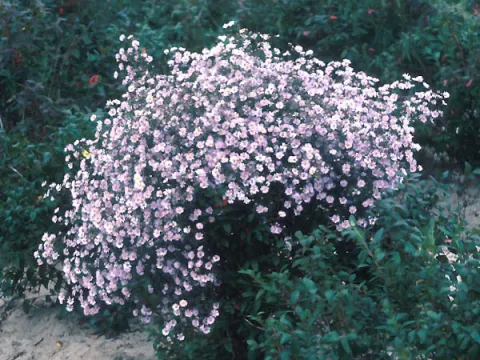
New Jersey Weed Gallery
The most frequent request we receive is for control recommendations. We cannot provide that information on this web site. Weed control recommendations that are appropriate for New Jersey may not be appropriate for someone living in another state. Recommendations for homeowners are considerably different from recommendations for commercial enterprises that have access to chemicals whose purchase and use require a pesticide applicator's license. There are a lot of variables in the weed control equation and without detailed information it is difficult for us to provide satisfactory recommendations.
We suggest that you contact your Cooperative Extension office in your state to obtain control recommendations appropriate for weeds occurring in your geographic location.
Filter
-
This genus is comprised of some 35+ species in our area (mid-Atlantic). Variation is common as hybridization occurs frequently. Flowering is in late summer to autumn which serves to differentiate them from the Erigerons which bloom earlier in the summer.
 Photo by Dr. John Meade, weed scientist emeritus, Rutgers NJAES Cooperative Extension
Photo by Dr. John Meade, weed scientist emeritus, Rutgers NJAES Cooperative Extension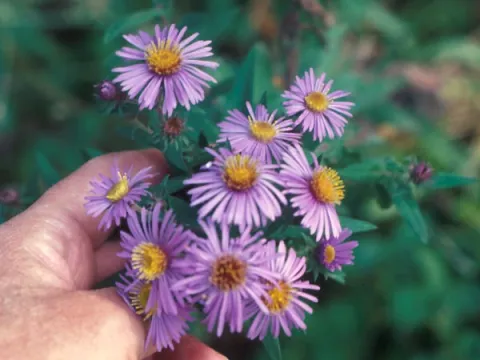 Photo by Dr. John Meade, weed scientist emeritus, Rutgers NJAES Cooperative Extension
Photo by Dr. John Meade, weed scientist emeritus, Rutgers NJAES Cooperative ExtensionUsually an ornamental grass, it does escape and become a weed problem. An extensive system of rhizomes spreads it away from the original planting. The stem is woody and has expanded nodes. Economic uses include fishing poles and garden stakes. It has given its name to another plant with semi woody stems with swollen nodes. See Mexican Bamboo.
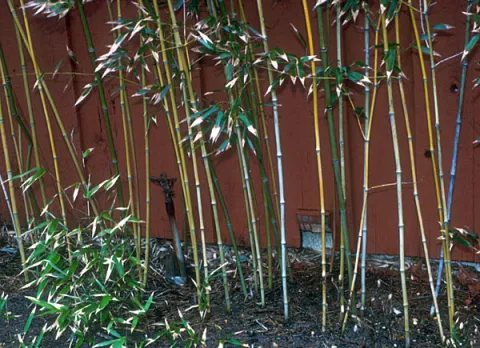 Photo by Dr. John Meade, weed scientist emeritus, Rutgers NJAES Cooperative Extension
Photo by Dr. John Meade, weed scientist emeritus, Rutgers NJAES Cooperative ExtensionWe have two species, Berberis thunbergii, Japanese barberry, and B. vulgaris, Common or European barberry. Both have escaped from cultivation. The spine tipped leaves make these a good privacy hedge. The European species is eradicated because it is an alternate host for stem rust of wheat.
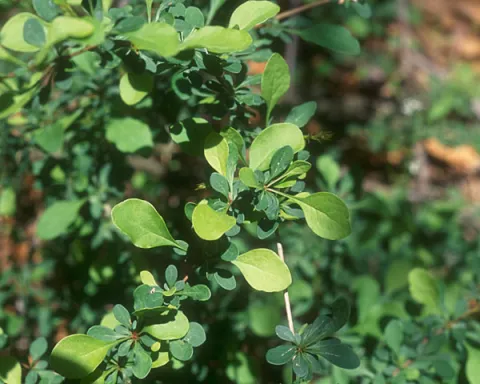 Photo by Dr. John Meade, weed scientist emeritus, Rutgers NJAES Cooperative ExtensionBarnyardgrass is an annual grass that prefers wet sites. It is not usually a problem in well drained cultivated fields but can grow heavily around irrigation pipe leaks and other wet spots in the field.
Photo by Dr. John Meade, weed scientist emeritus, Rutgers NJAES Cooperative ExtensionBarnyardgrass is an annual grass that prefers wet sites. It is not usually a problem in well drained cultivated fields but can grow heavily around irrigation pipe leaks and other wet spots in the field.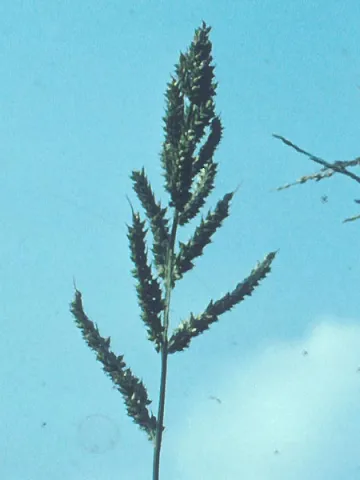 Photo by Dr. John Meade, weed scientist emeritus, Rutgers NJAES Cooperative ExtensionBedstraw, also known as cleavers, is a perennial not often found as a serious weed in New Jersey. It occurs in pastures and other untilled fields such as Christmas trees especially in North Jersey. It has whorled leaves and some species are prickly.
Photo by Dr. John Meade, weed scientist emeritus, Rutgers NJAES Cooperative ExtensionBedstraw, also known as cleavers, is a perennial not often found as a serious weed in New Jersey. It occurs in pastures and other untilled fields such as Christmas trees especially in North Jersey. It has whorled leaves and some species are prickly.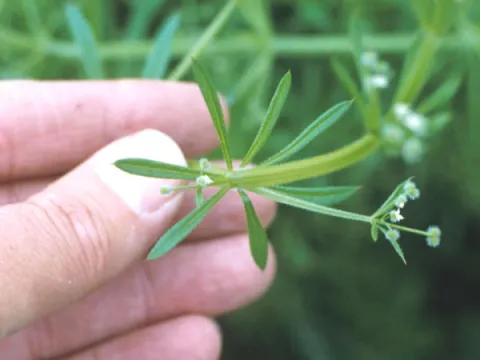 Photo by Dr. John Meade, weed scientist emeritus, Rutgers NJAES Cooperative Extension
Photo by Dr. John Meade, weed scientist emeritus, Rutgers NJAES Cooperative Extension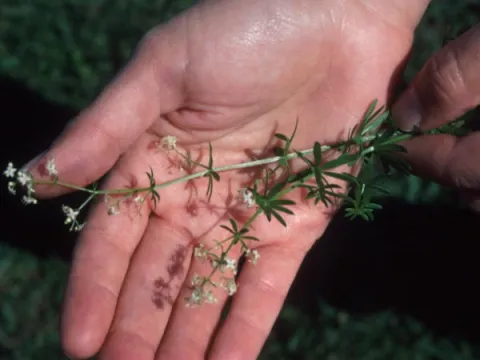 Photo by Dr. John Meade, weed scientist emeritus, Rutgers NJAES Cooperative Extension
Photo by Dr. John Meade, weed scientist emeritus, Rutgers NJAES Cooperative Extension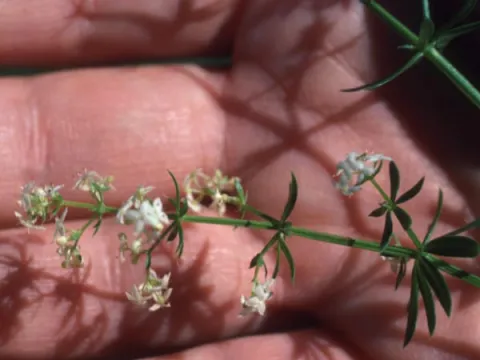 Photo by Dr. John Meade, weed scientist emeritus, Rutgers NJAES Cooperative Extension
Photo by Dr. John Meade, weed scientist emeritus, Rutgers NJAES Cooperative ExtensionBittercress is an annual member of the mustard family. It has become a serious problem in ornamental container nurseries. The seed capsule explodes and scatters seeds for some distance. In a closely packed container house it is obvious that an exploding capsule will infest many pots. In the field it acts as a winter annual.
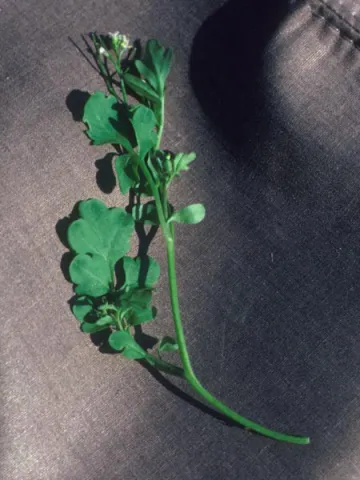 Photo by Dr. John Meade, weed scientist emeritus, Rutgers NJAES Cooperative Extension
Photo by Dr. John Meade, weed scientist emeritus, Rutgers NJAES Cooperative Extension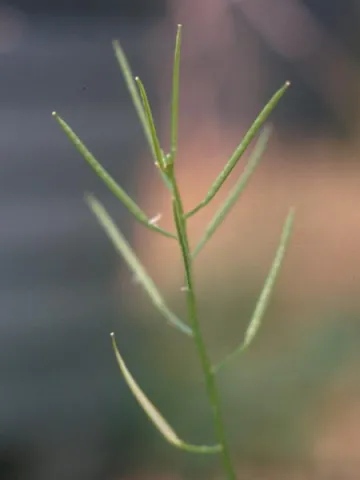 Photo by Dr. John Meade, weed scientist emeritus, Rutgers NJAES Cooperative ExtensionBlack medic is an annual weed of lawns. A member of the legume family, it has a small yellow flower and is a prolific seed producer so it can form dense patches. Dies out in the hot, dry summers.
Photo by Dr. John Meade, weed scientist emeritus, Rutgers NJAES Cooperative ExtensionBlack medic is an annual weed of lawns. A member of the legume family, it has a small yellow flower and is a prolific seed producer so it can form dense patches. Dies out in the hot, dry summers.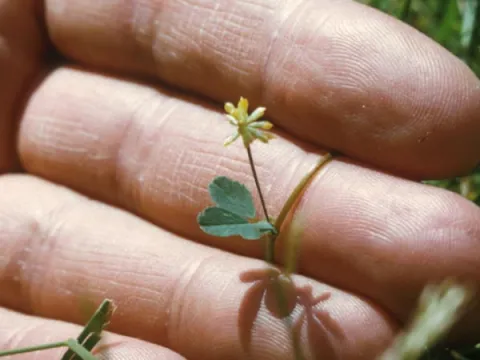 Photo by Dr. John Meade, weed scientist emeritus, Rutgers NJAES Cooperative Extension
Photo by Dr. John Meade, weed scientist emeritus, Rutgers NJAES Cooperative ExtensionA generic term for several species of Rubus. They have hurtful spines and one viney, low-growing species is called "rip shin" for obvious reasons. These white flowered members of the rose family prefer disturbed ground and are commonly found along roadsides.
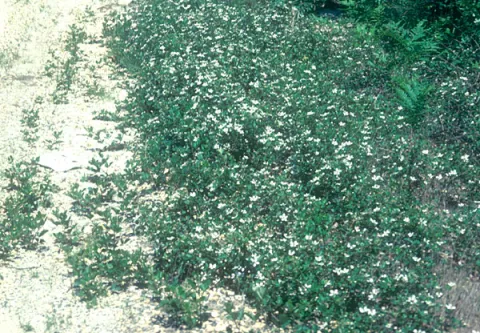 Photo by Dr. John Meade, weed scientist emeritus, Rutgers NJAES Cooperative Extension
Photo by Dr. John Meade, weed scientist emeritus, Rutgers NJAES Cooperative ExtensionBroadleaf plantain, normally a perennial, sometimes behaves as an annual. It is a problem in lawns and sometimes in thin alfalfa and pastures as well as Christmas trees. It is a low growing plant with large leaves. The leaves are purported to relieve the pain of insect stings if crushed and rubbed on the affected area. In the past the Native Americans called it "White mans' foot" because it was not native to the USA and since it has a sticky seed it was carried by the early settlers on their shoes.
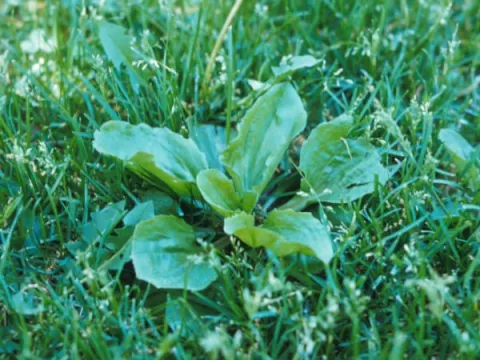 Photo by Dr. John Meade, weed scientist emeritus, Rutgers NJAES Cooperative ExtensionBroom Sedge is not a sedge but a member of the grass family. It is normally found on infertile soils. Provides good fall color.
Photo by Dr. John Meade, weed scientist emeritus, Rutgers NJAES Cooperative ExtensionBroom Sedge is not a sedge but a member of the grass family. It is normally found on infertile soils. Provides good fall color.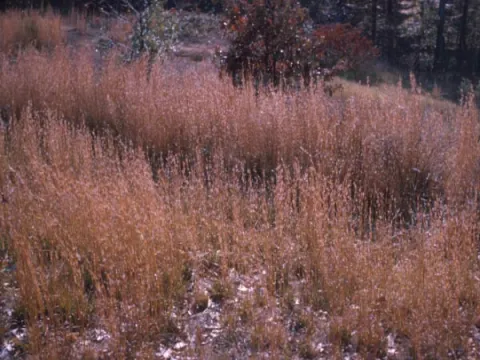 Photo by Dr. John Meade, weed scientist emeritus, Rutgers NJAES Cooperative Extension
Photo by Dr. John Meade, weed scientist emeritus, Rutgers NJAES Cooperative ExtensionBuckhorn Plantain is listed as a perennial but seems to act as an annual in our area. The leaves are close to the ground but the flower stalk becomes quite long. It could slip between the blade and bed of the old reel mowers but the rotary mowers cut it off before it flowers and sets seed so it has become less of a problem in lawn areas. Sometimes called ripple.
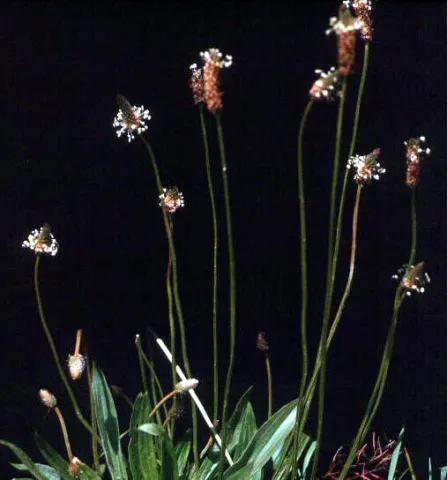 Photo by Dr. John Meade, weed scientist emeritus, Rutgers NJAES Cooperative Extension
Photo by Dr. John Meade, weed scientist emeritus, Rutgers NJAES Cooperative ExtensionBull thistle is a true biennial. It forms a rosette of leaves the first year and then sends up a flowering stalk the next year. Like other thistles it has sharp spines on stem and leaves. The flower is blue and quite large. Normally a weed of untilled fields.
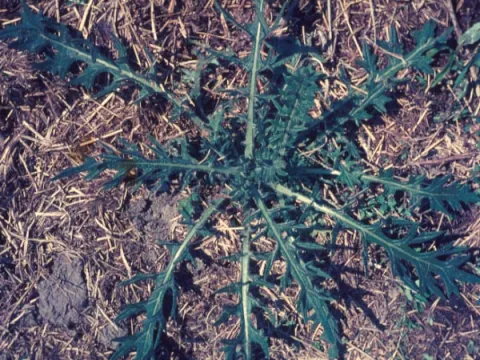 Photo by Dr. John Meade, weed scientist emeritus, Rutgers NJAES Cooperative Extension
Photo by Dr. John Meade, weed scientist emeritus, Rutgers NJAES Cooperative ExtensionBur cucumber has rapidly become one of the worst weeds we have in soybeans and corn. Apparently it was introduced in seed from Delaware. Its large number of seeds coupled with an extremely fast growing viney nature allows it to spread over one hundred feet in one year. Although a member of the cucumber family it does not have the fleshy fruit of the cucumber. The seeds are in the open and are covered with barbed prickly bristles which easily penetrate socks and become painfully imbedded in the skin.
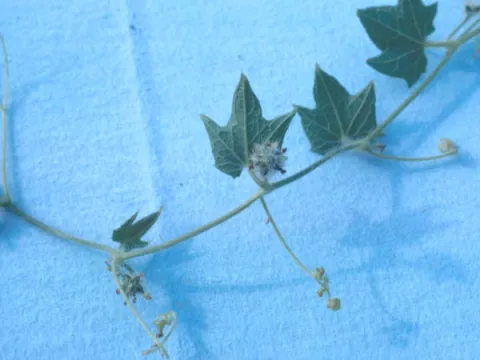 Photo by Dr. John Meade, weed scientist emeritus, Rutgers NJAES Cooperative ExtensionBurdock is a biennial plant that appears on open ground. A tall growing plant, the fruit has hooked bristles which infest animal hides and tails. It is a biennial with a large taproot which defies most efforts to dig it out.
Photo by Dr. John Meade, weed scientist emeritus, Rutgers NJAES Cooperative ExtensionBurdock is a biennial plant that appears on open ground. A tall growing plant, the fruit has hooked bristles which infest animal hides and tails. It is a biennial with a large taproot which defies most efforts to dig it out.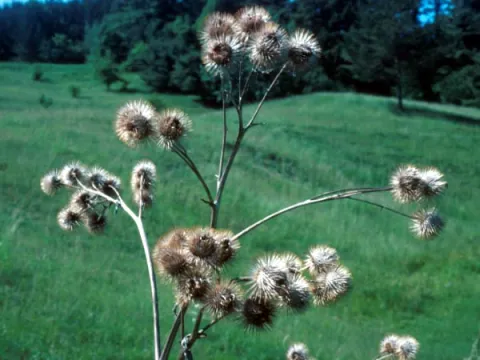 Photo by Dr. John Meade, weed scientist emeritus, Rutgers NJAES Cooperative Extension
Photo by Dr. John Meade, weed scientist emeritus, Rutgers NJAES Cooperative ExtensionCanada Thistle is one of our worst weeds. It is a perennial by virtue of an extensively creeping root system and rhizomes. It forms large patches wherever it becomes established. The plant is dioceous, which means that the male flowers are on one plant and the female flowers are on a different plant. Usually a patch of Canada thistle is one or the other. The male plants do not form seeds. The seed is readily carried on the wind by the plumose bristles fastened to it. There is a bacterium which invades the plant and turns it bone white. But it doesn't as yet seem to be an effective control.
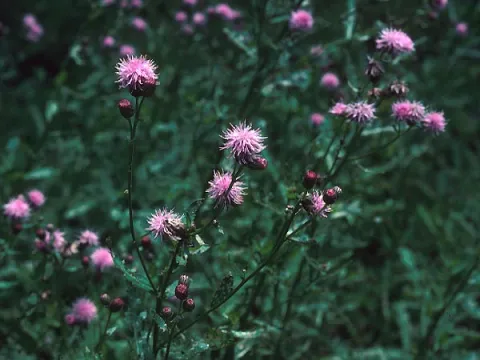 Photo by Dr. John Meade, weed scientist emeritus, Rutgers NJAES Cooperative Extension
Photo by Dr. John Meade, weed scientist emeritus, Rutgers NJAES Cooperative Extension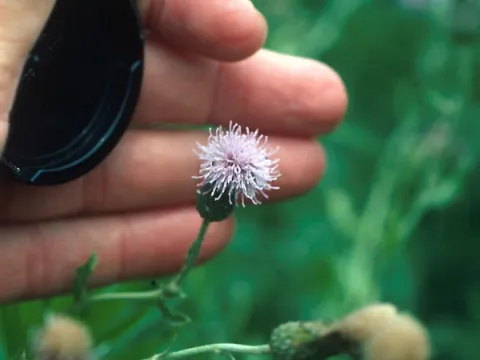 Photo by Dr. John Meade, weed scientist emeritus, Rutgers NJAES Cooperative Extension
Photo by Dr. John Meade, weed scientist emeritus, Rutgers NJAES Cooperative Extension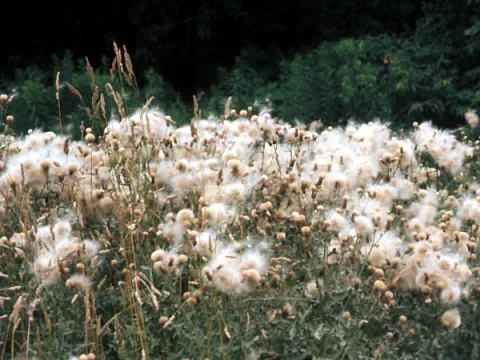 Photo by Dr. John Meade, weed scientist emeritus, Rutgers NJAES Cooperative Extension
Photo by Dr. John Meade, weed scientist emeritus, Rutgers NJAES Cooperative ExtensionCarpetweed is a plant that grows right down on the ground. It is an annual and sometimes forms large populations. Somewhere is a reference indicating that carpetweed is not a serious competitor to desirable plants. Mostly a weed of vegetables and nurseries.
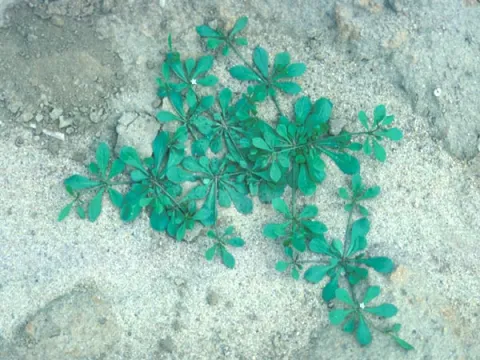 Photo by Dr. John Meade, weed scientist emeritus, Rutgers NJAES Cooperative ExtensionChicory is not normally considered a weed but rather a wildflower but since the N.J. Legislature wanted to name it a noxious weed it is probably best to include it here. It is a perennial by virtue of a taproot which is sometimes used for coffee.
Photo by Dr. John Meade, weed scientist emeritus, Rutgers NJAES Cooperative ExtensionChicory is not normally considered a weed but rather a wildflower but since the N.J. Legislature wanted to name it a noxious weed it is probably best to include it here. It is a perennial by virtue of a taproot which is sometimes used for coffee.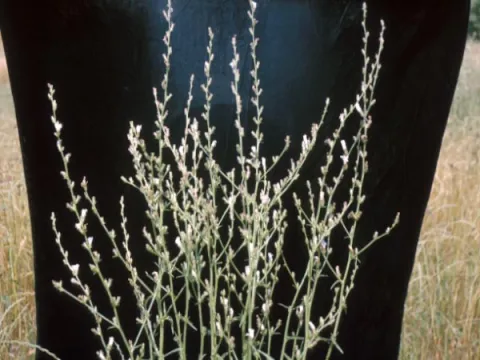 Photo by Dr. John Meade, weed scientist emeritus, Rutgers NJAES Cooperative Extension
Photo by Dr. John Meade, weed scientist emeritus, Rutgers NJAES Cooperative Extension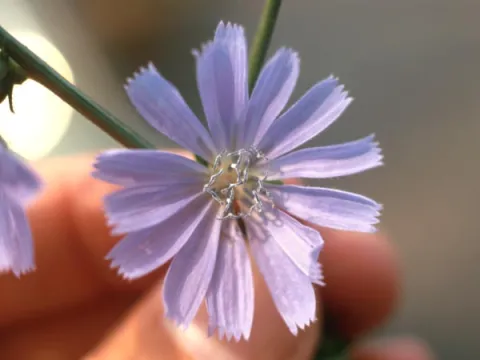 Photo by Dr. John Meade, weed scientist emeritus, Rutgers NJAES Cooperative Extension
Photo by Dr. John Meade, weed scientist emeritus, Rutgers NJAES Cooperative ExtensionCocklebur is one of our worst weeds in soybeans. It is a prolific seed producer and competes well with the soybean plant. It is tall growing and produces a seed capsule with barbed hooks on it. This allows for distribution by wildlife. Of interest is that newly infested fields seem to have it started around the edge or near the road indicating that it probably came in the combine.
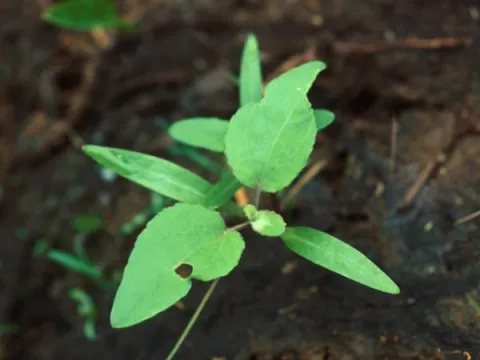 Photo by Dr. John Meade, weed scientist emeritus, Rutgers NJAES Cooperative Extension
Photo by Dr. John Meade, weed scientist emeritus, Rutgers NJAES Cooperative Extension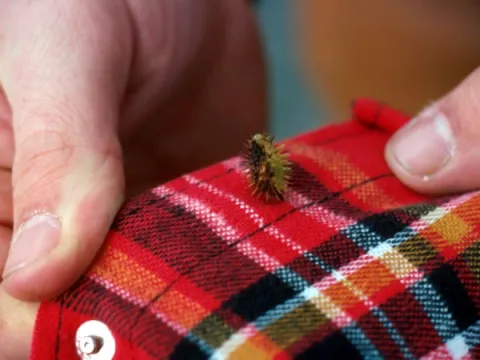 Photo by Dr. John Meade, weed scientist emeritus, Rutgers NJAES Cooperative Extension
Photo by Dr. John Meade, weed scientist emeritus, Rutgers NJAES Cooperative ExtensionA biennial plant with large (about 12 inches long) leaves having gray hairs on both sides. The first year it forms a rosette of leaves and in the second year produces tall (3 to 5 feet) flowering stem. The yellow flowers are crowded on a spike. Leaf extracts mixed with wild cherry root have been used for help with arthritis.
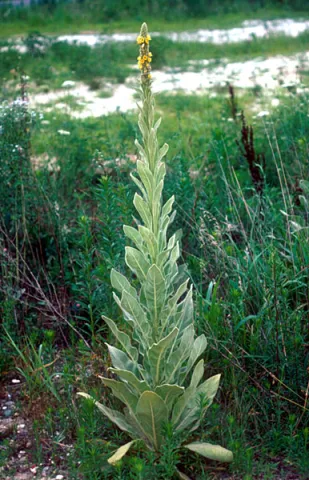 Photo by Dr. John Meade, weed scientist emeritus, Rutgers NJAES Cooperative Extension
Photo by Dr. John Meade, weed scientist emeritus, Rutgers NJAES Cooperative Extension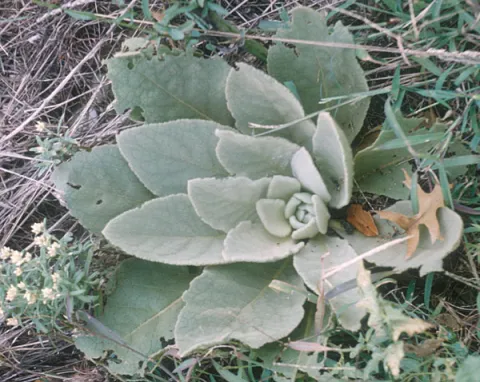 Photo by Dr. John Meade, weed scientist emeritus, Rutgers NJAES Cooperative ExtensionThere are many species of pigweed and they are weed pests in several cropping systems. Smooth pigweed (Amaranthus hybridus), was the first triazine-resistant plant uncovered. Redroot pigweed (A. retroflexus), is probably our most common one.
Photo by Dr. John Meade, weed scientist emeritus, Rutgers NJAES Cooperative ExtensionThere are many species of pigweed and they are weed pests in several cropping systems. Smooth pigweed (Amaranthus hybridus), was the first triazine-resistant plant uncovered. Redroot pigweed (A. retroflexus), is probably our most common one.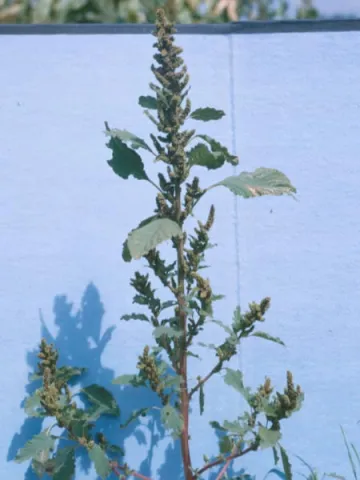 Photo by Dr. John Meade, weed scientist emeritus, Rutgers NJAES Cooperative Extension
Photo by Dr. John Meade, weed scientist emeritus, Rutgers NJAES Cooperative Extension